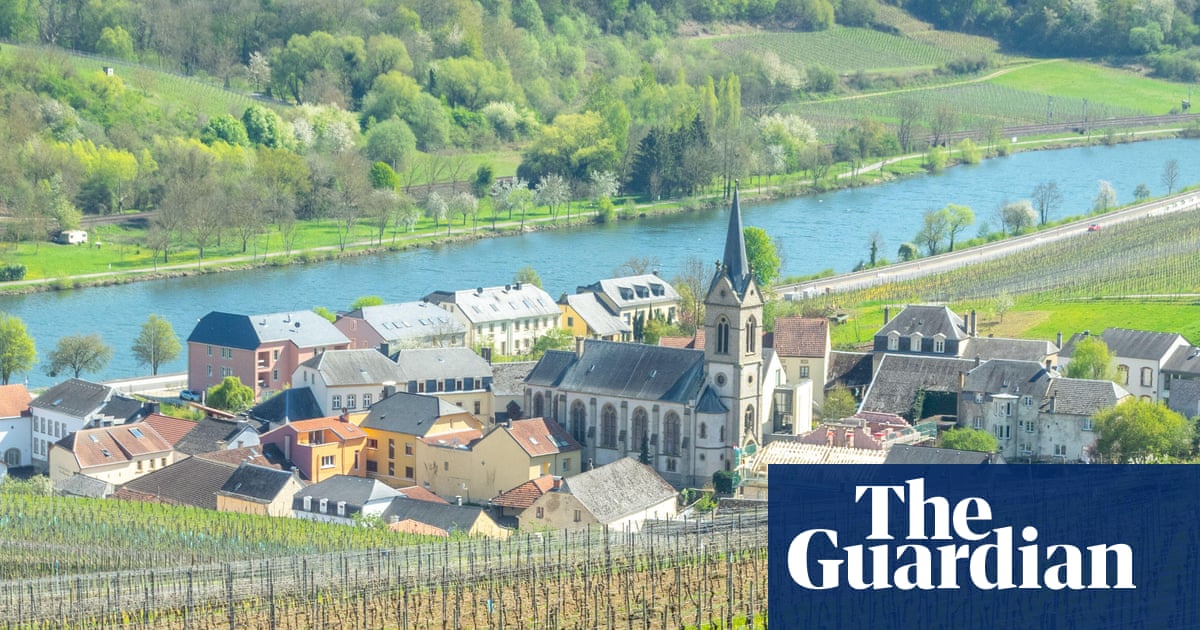Iam not sure what surprises me most when I get off the train at Luxembourg’s main station – the sheer friendliness of locals who seem to greet everyone as they pass by with a cheeryMoien(hello), or the fact that from this point I will not be paying a penny to travel the length and breadth of the Grand Duchy.
Five years ago, Luxembourg became the first country in the world to actively tackle its carbon footprint by making all public transport free for everyone, including tourists. So I have come to see how it works in practice, aiming to travel to the country’s little known vineyards hugging the slopes along the Moselle River and then trek through the mysterious canyons and forests of the Mullerthal region.
Bus 412 departs from right outside the station. No one asks for a ticket, and we soon leave the city, and the corporate offices of the likes of Google and Amazon, behind. It takes just an hour to arrive at Remich, one of several rustic winemaking villages whose picturesque vineyards line a 26-mile (42km) stretch of the Moselle.
Luxembourg has been producing wines in this minuscule region since Roman times, and today visitors can take their pick of 50 independent wineries, offering tastings of elegant rieslings, aromatic pinot gris, little-known local white grapes such as rivaner and elbling, as well as a dazzling selection of bubbly crémant.
There are plenty of reasonably priced hotels and camping sites all along Luxembourg’s wine route. I check in at Remich’s smartCasa49(doubles from €100), whose rooms offer fab views over the Moselle as giant barges chug past. The first stop is almost next door, at the historicCaves St Martin, whose excellent guided tours (from €9.50) are the perfect introduction to local wines. The tour takes us through a maze of underground galleries cut into the cliff side a century ago, where tens of thousands of bottles of crémant are aged, following the same complex methods as champagne.
It is tempting to hop on the scenicone-hour cruiseof the Moselle that leaves from the quayside at Remich, but I have booked a tasting atDomaine Kox, one of Luxembourg’s most innovative wineries. It is difficult to imagine a young winemaker more committed to eco-responsibility than fourth-generation Corinne Kox. She tells me the winery favours hybrid grapes because they are more resistant, so need far less treatment and therefore less use of the tractor, resulting in a lower carbon footprint. “For the same reason, we limit exports to 20%, while for the grape harvest we use local families rather than bringing in transient foreign labour. And whenever we can, horses are used to work the land rather than petrol-guzzling tractors,” she says. The small 12-hectare (30 acre) vineyard produces a staggering 30 different wines, which visitors can sample in a blind tasting (five glasses for €20).
Later that day, I take a sunset stroll along the waterside to the traditionalAn der Tourellerestaurant in the next village. The specialities here arewäinzoossiss, grilled sausages marinated in riesling, served with Luxembourg frites, and homemadekniddelen, dumplings served in a creamy sauce with crunchy bacon; this is totally delicious comfort food served in huge portions.
Sign up toThe Traveller
Get travel inspiration, featured trips and local tips for your next break, as well as the latest deals from Guardian Holidays
after newsletter promotion
The next day, the bus drives up to the ancient village of Ahn, where one of Luxembourg’s numerous hiking routes begins. TheTraumschleife Palmberg wine and nature trailis a 5.6 mile trek that takes in sloping vineyards bordered by steep limestone cliffs, lush forests and a nature reserve of ancient boxwood and wild orchid meadows. The path ends up following the valley of the Donwerbaach River, which you have to crisscross half a dozen times on slippery stepping-stone bridges. Three hours later and we are back in Ahn, just in time for a tasting atSchmit-Fohl, an independent winery now in its seventh generation of family ownership.
It takes two hours, including a change of bus, to arrive in Berdorf, at the centre of the Mullerthal region, which locals proudly call Luxembourg’s Little Switzerland. With70 miles of nature trails, Mullerthal is a paradise for outdoor sports enthusiasts, many of whom use the brilliantTrail-Innas their base. “If you just take one trek it has to beB2 trail,” says our guide, Gian Marco Bartolini. The 2.5-mile hike, which starts on the edge of Berdorf, makes for an unforgettable adventure – we weave our way through a labyrinth of forests and gorges, and canyons and soaring cliffs, which splinter into high stone towers separated by narrow clefts that you can barely squeeze through. And to end on a perfect note, the super-efficientpublic transport plannergives the times for bus 211 from Berdorf, which has us back to Luxembourg station in under an hour, with plenty of time to make our connection on the high-speed TGV train back to Paris.
The trip was organised byVisit Luxembourg
